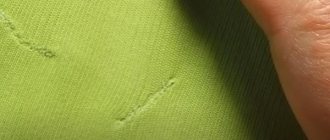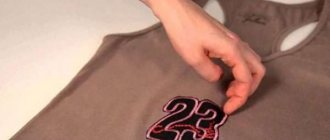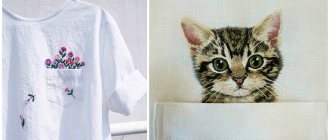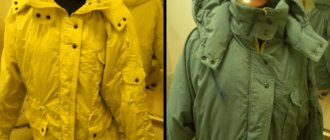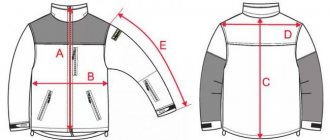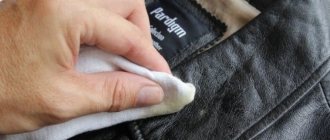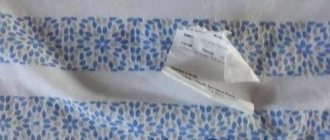Is it possible to put reflective stickers on a car?
As for sticking such stickers on cars, the traffic police says that sticking white reflective stickers on the back of the car and red reflective stickers on the front of the car is prohibited.
Interesting materials:
When did the transition to the Gregorian calendar take place? When did the landing on Mars take place? When did the retirement age increase? When to undergo technical inspection 2022? When does oral Russian take place? When did LJ become famous? When are Gosloto 5 out of 36 draws held? When are extraordinary medical examinations carried out? When does an employer submit 2 personal income taxes? When will uranium decay?
How to glue a thermal sticker on a jacket or down jacket
Gluing a thermal sticker onto fabric is, in general, not a difficult task. You need to place the sticker in the right place and press it with a hot iron. But in the case of an insulated jacket or down jacket, two points should be taken into account. Firstly, often the outer material of such clothing is made of synthetics. Such fabric can be easily damaged by an iron that is too hot, and low heat may not remove the sticker, especially a thick one. Secondly, for the best sticker gluing, the surface under it must be flat, preferably hard. And the filler in the jacket creates softness and volume. The master class below is about how best to proceed when gluing a thermal sticker onto a synthetic item with bulk insulation.
By the way, you can make a hot-melt adhesive application yourself. How - read here:
How to make thermal decal with your own hands
You will need:
- thermal sticker;
— iron and ironing board;
- ironing iron (a piece of thin cotton material);
- towel;
- hand sewing needle and thread.
Decorating clothes using thermal transfer
Step 1
First you need to prepare the damaged area. If it is a tear, it is worth fastening its edges manually using not too frequent stitches with thin threads. It is necessary to strengthen the damaged area without thickening it too much. If a hole was formed due to thermal effects (for example, a hole was burned by a light from a firework), and deformed, thickened edges formed, it is better to cut them off so that the surface of the fabric becomes flat. If the edges of the burnt hole are not too deformed (as in our case), you don’t have to cut them off.
Step 2
In order for the sticker to stick well, it is better that the surface on which we stick it is flat. If the damage is on the front or back of the jacket, it is enough to smooth the repaired area on an ironing board. If we are repairing a sleeve or trouser leg of overalls, it is good to use a sleeve platform, wrapping it in a towel so that the part is well stretched. If you don't have a sleeve platform, you can roll up a large towel tightly and place it in your sleeve or pant leg.
Place the sticker covering the damaged area.
Cover everything with an ironing iron.
Glue with a heated iron (medium heat).
Wait until the material cools down and check if the sticker has stuck well. If necessary, repeat the manipulations with the iron, not forgetting the iron.
Step 3
If you are going to wash the item, it is better to additionally sew on a sticker. If not secured with a seam, it may begin to peel off after washing. It is better to use a thin needle. Sew a needle around the perimeter of the appliqué with a backstitch. Only grab the top layer of fabric and the sticker.
Master class and photo: Natalya Pykhova
How to sew a hole in knitwear: 7 different ways to repair different holes
How to repair a torn backpack: master class
How to easily repair a torn belt loop on jeans
What types of applications are there?
The decor is presented in the form of elements of various sizes and textures - from small embroidered compositions to inserts crocheted or woven using the macrame technique.
You can decorate various clothes with applique:
- coat;
- skirts;
- shirts;
- blouses;
- shorts;
- dresses;
- jackets;
- sleeveless vests.
Moreover, it does not matter what fabric the item of clothing is made from. Embroidery or sequin decor looks good on denim items. Knitted T-shirts and tops are in harmony with knitted and woven compositions. Dresses made of flowing fabrics (organza, chiffon, tulle) are decorated with hand-embroidered and assembled flowers. Applications with rhinestones and stones will effectively complement products made from dense materials.
Rules of care
These rules will help the application last longer:
- The product is washed by hand at a water temperature not exceeding +40.
- Before wet cleaning, clothes should be turned inside out.
- Don't overuse friction. It is advisable to immerse in a soap solution or stain remover solution. Leave for 0.5-1 hour, depending on the dirt, press several times, then remove to a towel and blot.
- The item should dry naturally.
- The product should also be ironed from the wrong side.
There is nothing complicated about attaching a thermal patch. The cost of the sticker will not affect the budget in any way, but this way you can save a hopelessly damaged item and even make it unique.
What is it and where is it used
Gossamer is a material consisting of thin adhesive fibers that are connected by weaving. The width of the roll ranges from 0.5 cm to 5 cm. A roll 90 cm wide is available for sale. The application is wide:
- There is no time to go to the sewing workshop, but the item is urgently needed.
- Sewing stitches on thin fabric are unacceptable.
- Gluing collars, cuffs, hemming trousers.
- The fabric contains a cut that requires immediate repair.
- Sealing the corners of the product.
There are two types of material:
- On a paper basis - a diamond-shaped mesh, more flexible and stretchable.
- Cobweb without paper, in rolls - dry glue in a strip.
Instructions for applying different types of thermal adhesives
To apply the patch correctly and beautifully, it is necessary to do this taking into account the variety of decorative materials and base fabric.
Decal:
- To apply it to a surface, you should first examine the tags on the clothing and make sure that it can be applied with a hot iron.
- Straighten the surface.
- Remove the protective film and attach the design to the fabric.
- Cover the top with a cotton napkin.
- Iron with an iron heated to 150 degrees for 10 seconds. The steam mode cannot be used.
- If there is a hole in the product, first fill it with adhesive interlining from the outside.
- After this, apply the sticker and iron it with an iron. The size of the sticker should be slightly larger than the hole in order to completely cover it.
Hot-melt adhesive patch:
- You need to choose a thermal patch that is suitable in size. You can change the shape yourself by cutting off the excess with scissors.
- Apply to the damaged surface and run a hot iron over it. Some types need to be pressed rather than ironed.
- The exposure time depends on the fabric of the product. On average, 30 seconds is enough.
- For synthetic materials, it is advisable to place a cotton cloth under the iron.
Thermal film:
- The application technology is similar to the previous one. The only difference is that the picture should be applied with the front side to the item.
- Place a sheet of paper on top and press with the sole of the iron.
- To reliably glue the thermal transfer, you can iron the area with the transfer and the reverse side.
- When the sticker has cooled, carefully remove the backing and iron again.
- If you need to remove the sticker, heat it with a hairdryer and carefully remove the sticker from the surface using a knife.
- Wipe the cloth with alcohol and remove any remaining glue. This method is used only for dense fabrics and is not suitable for delicate materials.
Decorating a cotton product
In addition to the jacket, you can decorate any item in your wardrobe with a decorative sticker. For example, mothers know that children’s pants often tear at the knees. To prevent the formation of holes, it is necessary to glue the thermal sticker to the trousers and panties in the knee area with an iron in advance.
Place the product on a flat, stable surface. Heat the place where the decoration is supposed to be glued with an iron. This will ensure good adhesion of the decor to the fabric.
Then we apply the sticker to the clothing with the front side facing up. Next, cover with thick cloth or tracing paper. Place a hot iron on top for 15-20 seconds. If the main fabric is thick, increase the heating time to 2-3 minutes.
We suggest that you familiarize yourself with Mold Remedies for the Bathroom
If you need to glue a large embroidered picture with an iron, first glue one part and then the other. After waiting for the top layer to cool, remove it and admire your work.
Types of decals
Before gluing the applique onto the fabric, you need to select it and purchase it from a specialized store that sells sewing supplies. There are several fundamentally different types of thermal application, which differ from each other in the base and material of the design element. The table below lists all existing types of thermal adhesives, indicating their features.
Table - Types of thermal decals
| Type | Peculiarities |
| Flex | — Thermal film; - has a smooth front side |
| Phlox | — Thermal film; - has a velvety “face” |
| Thermal adhesive with increased elasticity | — Stretches well on fabric; - used for silk, guipure, synthetics and other delicate materials |
| With effect | — Shiny surface (glitter); — with 3D drawing; - holographic |
| Reflective | — With special coating; — the “face” of the application shines when exposed to light in the dark |
| Phosphorescent | — Has the ability to accumulate sunlight; - glows at night |
Scotch tape for face makeup. Why is there tape in your makeup bag?
This invention made the work of office workers, artists, designers, craftsmen and handicraft lovers easier. And modern girls who study makeup, are fond of nail art and styling, offer their own options for using ordinary stationery tape in their beauty experiments.
makeup
Scotch tape helps beginners create a perfectly even wing with a clear edge, or create a professional smokey eye. Adhesive tape allows you to create a kind of stencil with which you can draw straight lines and shapes.
Important: before using stationery tape, attach it to the skin of your hand several times so that the adhesive layer wears off a little and does not injure the delicate skin of your face. And above all, it is used for eye makeup. If you need the effect of a very clear border of shadows or liner, then a cotton swab will not always cope with this. You can use tape for these purposes.
Smokey with tape -
Another trick is to use tape to collect any loose glitter. As a rule, they are difficult to remove even with an elastic brush, and the adhesive side of the tape works much better.
nail art
The tape used in nail art is the most common, stationery tape. but good color blocking or any geometric composition is now rarely complete without it. pros can create clear contours without tape, but home manicure enthusiasts actively take advantage of the benefits of working with tape. the design is clear, smooth, and professional.
Tip: if you use tape for nail art, cut small pieces in advance and attach to the table. And don’t be distracted by scissors every time.
The skin around the nail is also sealed with tape if you need to make some kind of design in which the nail is dipped into the coloring composition. And so as not to have to remove a lot of excess polish later and not to dry the skin and cuticles with nail polish remover, protect the skin around the nail with tape.
a haircut
There are special adhesive hair tapes that can be used to create the most creative haircuts or coloring. this gadget is called vintage, and indeed, in the last century it was actively used to fix hair curlers, for example.
But resourceful girls sometimes use regular tape for these purposes. If you apply tape to hair that needs to be cut, you can solve several problems at once: maintain a straight line and maintain the correct direction of the hair. Depending on the angle at which you stick the tape, this will be the silhouette of the trimmed strands. The most convenient thing is to use adhesive tape to create short, straight bangs like a ruler.
Or you can trim the ends by securing them with tape and cutting off the ends secured with tape.
Lifting
This advice is rather a unique case. But some stars use it to tighten wrinkles during important events.
The tape, of course, should be flesh-colored and it is better to disguise it well. True, meticulous paparazzi can still see all your manipulations.
Types of patches
There are several ways to patch a hole in your clothing. Patches can be made from the same fabric as the damaged item. There are products made from adhesive, thermal film, and lace. Thermal patches are most convenient for repairs. Stickers with embroidery, rhinestones, sparkles, and any prints are suitable for decoration.
Adhesive fabric
The material is used when unwanted abrasions occur on clothing. The area that needs to be patched is first steamed with an iron. Then the patch is glued using an iron. To consolidate the result, sew along the contour on a machine with threads to match the product.
